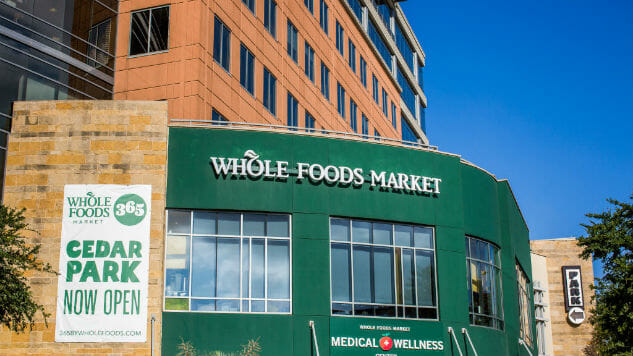5 Things to Know About the Amazon-Whole Foods Deal and the Future of Grocery Delivery
Top Photo by Drew Anthony Smith / Stringer / Getty Images
Amazon has made a huge splash and acquired organic supermarket chain Whole Foods for $13.7 billion. It marks a significant shift from the usual tech giant acquisitions. This isn’t an app or a hardware maker. This is Amazon’s $13.7 billion bet on dominating the grocery and food delivery business.
Amazon has been operating Fresh, its own grocery delivery business, for years but the deal gives Amazon a greater reach into the supermarket business. The Whole Foods chain has 460 stores across the US.
For Whole Foods, it’s an opportunity to rebuild its own reach at a time when the supermarket’s share prices have been gradually declining following the announcement that it was closing nine stores earlier this year. News of the acquisition sent Amazon’s share price up 3.5 percent while shares in other supermarkets dropped, clearly spooked by the news, including Walmart and Tesco dropping six percent each.
Online grocery delivery can be notoriously difficult, especially when it comes to the timely delivery of perishable goods, so here are five ways the purchase of Whole Foods will give Amazon an edge in this fight.
1. Amazon has shown how committed it is to groceries

Photo by Joe Raedle / Staff / Getty Images.
Amazon has been on the edge of the grocery business for a while. Its own delivery service has been relatively successful but the traditional giants like Walmart still dominate the old-fashioned grocery shopping space. Amazon accounts for less than one percent of the grocery spending market.
However, this deal with Whole Foods marks Amazon laying down the gauntlet and proving just how serious it is about its grocery business. Amazon clearly wants to do to supermarkets what it did to bookstores.
2. Even Amazon needs some extra name value

-

-

-

-

-

-

-

-

-

-

-

-

-

-

-

-

-

-

-

-

-

-

-

-

-

-

-

-

-

-

-

-

-

-

-

-

-

-

-

-










































